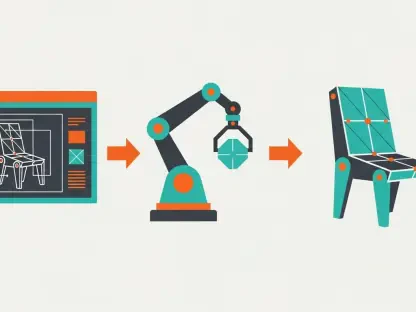Unmasking the ‘AI-First’ Facade: Why Authenticity Matters
The corporate landscape is increasingly cluttered with companies proclaiming themselves as “AI-first,” yet beneath the bold announcements, many lack any meaningful integration of artificial intelligence technologies. This trend, driven by the urgency to appear innovative, often results in superficial efforts that drain resources and erode trust among stakeholders. The pressure to keep pace with competitors or to ride the wave of industry hype can lead organizations to prioritize image over substance, risking stalled projects and disillusioned teams. This guide aims to cut through the noise, offering a clear path to genuine AI adoption that delivers real value.
Beyond the surface, the implications of inauthentic AI strategies are profound, affecting everything from budget allocations to employee morale. Companies may invest heavily in tools or initiatives that fail to produce results, creating a cycle of wasted effort and missed opportunities. The goal here is to provide actionable insights that help organizations avoid these pitfalls, focusing on building a foundation of curiosity, leadership engagement, and practical application. By addressing these core areas, businesses can move toward meaningful progress rather than empty promises.
This exploration will cover key strategies such as fostering grassroots innovation, ensuring leaders actively participate in AI learning, and emphasizing practical, narrow applications over grandiose plans. Readers will gain a roadmap to sidestep the trap of performative innovation, learning how to cultivate an environment where AI serves as a true enabler of efficiency and growth. With these principles in mind, the journey to authentic integration begins with understanding the broader context of this industry trend.
The Rise of Performative AI: A Cautionary Industry Trend
In recent years, the rush to adopt an “AI-first” label has become a defining feature of corporate strategy across sectors, often spurred by the fear of being left behind. Companies frequently react to competitors’ press releases or widely publicized case studies, adopting AI not out of internal necessity but as a defensive maneuver. This reactive stance can lead to initiatives that lack depth, where the focus shifts from solving real problems to simply checking a box on the innovation checklist.
Such performative adoption stands in stark contrast to the deliberate, iterative process required for true technological integration. While genuine progress unfolds through trial and error, often over extended periods, many organizations opt for quick, visible wins that rarely sustain long-term impact. This mismatch between expectation and reality creates a gap where resources are misallocated, and employees grow skeptical of leadership’s commitment to change.
The consequences of this trend are evident in numerous stalled pilots and abandoned tools, as companies struggle to translate high-level directives into actionable outcomes. Historical patterns show that technology adoption succeeds only when driven by internal needs rather than external pressures. Understanding this dynamic is crucial for any organization aiming to avoid the pitfalls of superficial AI strategies and instead build a foundation for lasting transformation.
Building Genuine AI Integration: Actionable Steps to Avoid the Trap
Navigating the complexities of AI adoption requires a structured approach that prioritizes authenticity over appearance. The following steps offer a practical framework for organizations seeking to embed AI in a meaningful way. Each strategy addresses specific challenges while providing guidance on implementation and best practices.
Step 1: Foster Bottom-Up Curiosity Over Top-Down Mandates
True innovation often emerges from the ground up, where employees experiment with AI tools to address personal or team-specific challenges. Encouraging this organic curiosity, rather than imposing rigid mandates from above, can spark genuine progress. For instance, a developer might use a language model to streamline debugging, or a marketer could automate content ideation, laying the groundwork for broader adoption through real-world problem-solving.
Encourage Personal Experimentation
Creating an environment where staff feel safe to explore AI solutions is essential for fostering innovation. Providing access to user-friendly tools and platforms, along with time to tinker, can empower individuals to test ideas without the pressure of immediate results. Training sessions or internal sandboxes where employees can play with AI applications help demystify the technology, turning curiosity into practical skills that benefit the organization.
Avoid Formalizing Organic Efforts Too Soon
While structure is important, imposing formal processes like task forces or strict objectives too early can stifle the natural momentum of grassroots efforts. Such interventions often shift the focus from experimentation to compliance, draining enthusiasm from those who were initially eager to explore. Instead, leadership should observe and support these early initiatives, allowing them to evolve organically before introducing frameworks that might constrain creativity.
Step 2: Lead with Participation, Not Compliance
Leadership plays a pivotal role in shaping how AI is perceived and adopted within an organization. When executives and managers engage directly with AI tools, demonstrating a willingness to learn alongside their teams, they set a powerful example. This hands-on approach contrasts sharply with detached mandates that often alienate employees and hinder progress.
Model Vulnerability in Learning
Leaders who openly share their experiences with AI—both the successes and the inevitable missteps—build trust and encourage a culture of learning. By admitting when a tool didn’t work as expected or celebrating a small win like automating a report, they normalize the trial-and-error process. This transparency can inspire others to take risks, knowing that failure is viewed as a step toward improvement rather than a mark against performance.
Steer Clear of Rigid Directives
Enforcing AI adoption through strict policies or quotas often breeds resentment, as employees feel pressured rather than motivated. Such top-down approaches can turn a potentially exciting opportunity into a burdensome task, reducing engagement. A better path involves creating space for dialogue, where teams can voice concerns and contribute ideas, ensuring that AI integration feels collaborative rather than coercive.
Step 3: Focus on Practical, Narrow Applications
The allure of sweeping AI transformations can be tempting, but the reality is that most impactful uses of AI are narrow and specific. Starting with well-defined tasks, such as automating repetitive processes or assisting with data analysis, offers immediate value and builds confidence in the technology. This focused approach helps organizations avoid overreaching with untested, complex solutions.
Prioritize Everyday Utility
Identifying areas where AI can deliver quick, tangible benefits is a smart starting point. Tools that help with mundane tasks—like drafting emails, generating summaries, or troubleshooting code—can save time and reduce frustration for employees. These small victories create a positive feedback loop, encouraging wider adoption as staff see direct improvements in their daily workflows.
Resist Vendor Hype
The market is flooded with enterprise AI solutions promising revolutionary change, often at a steep cost. However, many of these tools fail to deliver in real-world settings, leaving companies with expensive disappointments. Adopting a test-and-learn mindset, where solutions are piloted on a small scale before full investment, helps separate genuine value from marketing exaggerations, protecting both budget and credibility.
Step 4: Embrace the Discomfort of Iteration
Integrating AI is rarely a linear journey; it involves setbacks, adjustments, and continuous learning. Organizations must be prepared to endure this discomfort, recognizing that short-term challenges are often the price of long-term gains. Patience during this iterative process is key to unlocking the full potential of AI.
Celebrate Small Wins
Acknowledging incremental progress, such as successfully automating a single workflow or improving response times in customer service, keeps morale high. Public recognition of these achievements, whether through internal communications or team meetings, reinforces the value of persistence. These moments of success serve as reminders that even small steps contribute to a larger transformation.
Prepare for Setbacks
Not every AI initiative will yield immediate results, and broader applications may fall short of initial expectations. Preparing teams for this reality by setting realistic goals and emphasizing learning over perfection helps manage disappointment. Leadership should frame setbacks as opportunities to refine strategies, ensuring that the organization remains committed to the journey despite inevitable hurdles.
Key Takeaways for Authentic AI Adoption
Summarizing the essential strategies for genuine AI integration provides a quick reference for organizations striving to avoid performative traps. These core principles guide the path toward meaningful progress:
- Foster curiosity-driven experimentation from the ground up.
- Lead by engaging directly with AI tools, not by enforcing compliance.
- Start with practical, narrow AI applications for tangible results.
- Accept the slow, iterative nature of integration with patience.
These steps collectively form a blueprint for sidestepping the allure of superficial innovation. By adhering to them, companies can build a culture where AI serves as a practical tool for growth, rather than a hollow badge of modernity.
Beyond the Hype: AI’s Role in Future Organizational Growth
Looking at the broader industry landscape, the pressure to adopt AI as a competitive necessity shows no signs of abating. Organizations across sectors face the challenge of balancing the push for innovation with the need for practicality, ensuring that investments in technology align with actual business needs. This tension requires a nuanced approach, one that adapts the strategies outlined here to specific organizational contexts while maintaining a forward-thinking perspective.
Future developments in AI tools are likely to focus on specialized use cases, offering more tailored solutions for industries like healthcare, finance, or logistics. However, persistent challenges—such as navigating vendor hype and overcoming employee resistance—will continue to test companies’ resolve. Staying adaptable, by regularly reassessing tools and strategies, ensures that AI adoption remains relevant and effective in a rapidly evolving environment.
The principles of authentic integration also apply to individual organizational growth, where unique pain points and goals shape the approach to technology. Companies must remain vigilant, avoiding the temptation to follow industry trends blindly, and instead focus on internal drivers of change. This tailored mindset, combined with a commitment to experimentation, positions organizations to leverage AI as a true catalyst for sustainable progress.
Conclusion: Commit to Real Transformation Over Theater
Reflecting on the journey, the dangers of adopting an “AI-first” label without substance become evident as countless organizations fall into the trap of performative innovation. The steps taken—fostering curiosity, leading with participation, focusing on practical applications, and embracing iteration—prove vital in steering away from empty promises. These efforts lay a foundation for genuine change, even when progress feels slow or uncertain.
Moving forward, the emphasis shifts to sustaining momentum through quiet experimentation rather than seeking public validation through grand announcements. Supporting employees who explore AI solutions without fanfare emerges as a powerful strategy for long-term success. Organizations that commit to this path discover that real transformation happens in the subtle, persistent efforts of curious individuals, paving the way for deeper, more impactful integration in the years ahead.









